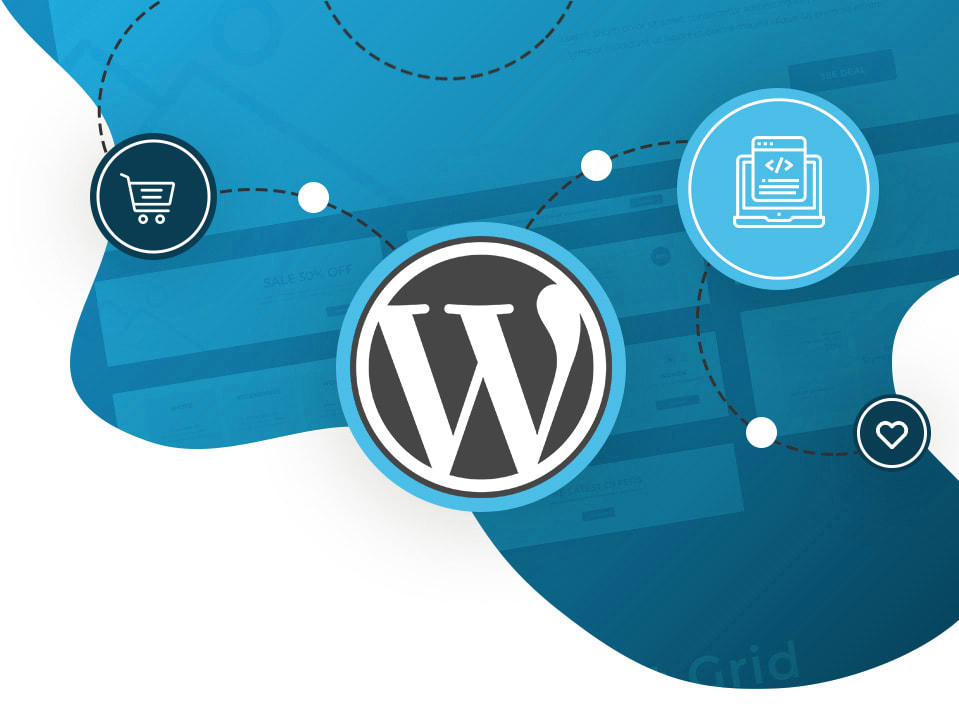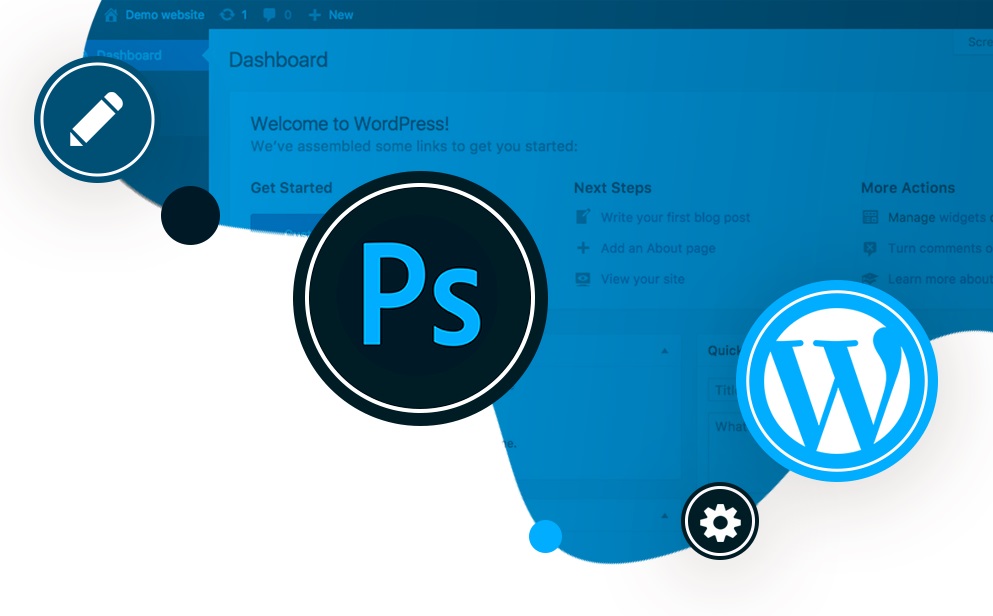

5 Steps How PSD to WordPress Conversion Is Made. Almost 50,000 new WordPress websites go live daily!! So, the figure makes it tough for the website owners to stay ahead! One certain way of quick attention could be to create the custom, unique, and PSD to WordPress theme conversion. Specifically, it will be designed for your websites and the websites do not have to be one of the others on the web!
There are many other standards while designing the website theme. WordPress (WP), Photoshop (PSD) Files, and somewhat lately these last few years, Twitter Bootstrap- the framework for creating the engaging websites that industry experts are considered these days.
These days, it is the best and simple option to consider. Nevertheless, changing the PSD to a WordPress website is not specifically easy. It needs much more than Photoshop skills. For changing the PSD to a fully functional Responsive theme that has to be considered on WordPress, you should know the front-end web development languages, such as, JavaScript, CSS, and HTML, and the backend programming language PHP.
It is always better to proceed towards how it works! However, definitely, it is not simple, it could be completed in five simple steps! Read- on!


For creating a web design that surely fulfills the criteria of functionality and looks, you will require to do some research. First, who are your potential viewers, and what are their requirements? These must be the key major of the research.
Another feature of web design that you have to research the methods the competitors have considered. The rivals are of course more successful than you are; therefore you have to understand much from the design that they consider. After completing the research, you have an idea of how the website will appear, hence, you must consider the functionality part now and what functions you prefer the web design to hold.
After sorting the things out, write them up on paper. Map and write what you want your website to appear to have visual assistance as you move ahead.
Soon after completing the physical wireframes and sketches, you can jump to the capital’s fire and chair Photoshop. The initial thing you have to do before starting is to guarantee that you are considering the column-based grid, like, XXgrid. It will make the design look really aligned and tidy. It is not for aesthetics only.
With the column-oriented grid for creating the aligned design to make it simple for you or the front-end developer who can develop the CSS and HTML to have responsive and optimized layouts for smartphones and tablets.
Before moving ahead to the next step, always consider maintaining the PSD design into layers, that is every section must have its folder with similar titles.
After creating the web design that you are fully satisfied with is the crunch time. Generally, what you require to do now is the PSD to WordProcess process. These days, WordPress has integrated built-in CSS3 and HTML. These are better than CSS2 and XHTML as despite all the borders, rounded edges, buttons and gradients, and other features being generated with images, they are made as to the functional parts of CSS3 coding.
Therefore, PSD file slicing generally slicing the background images from the PSD. For this, you should open the file in either illustrator or photoshop, majorly rely on what software you are using for creating the design. If the web designer has completed the job the best way, he must have built the well-structured design with layers and folders, making it simple for you to discover what you require. Find out the web design and appearance for images that you think require slicing.
Basically, these are the images that cannot be generated with CSS3, basically the background images and logo. When the replacement of the images is completed with CSS, you can notice an immense decrease in load times. It engages many users to the website, as the appropriate internet user cannot wait much to let the website load.
With the general template read and you require to include it in the WordPress context. However, before doing that, you may need some knowledge on how things are managed in WordPress.
WordPress has a particular file structure that should follow. Basically, you can upload the web pages to the WordPress software and WordPress themes should consider it seamlessly so that the plugins and the extra functionalities can be integrated without any incompatibility and hassle issues. Below are few pointers that can assist you in the same:
style.css: The main stylesheet: It is attached to the theme and it has the header details of the theme.
rtl.css: The main stylesheet: It is connected to the theme and has the theme’s header information.
index.php: The main template file: The above file is the template’s parent file.
comments.php: It represents the comments template.
front-page.php: The front page template. It is used for static front pages only.
home.php: By default, it is the front page.
Single.php: It is used when a particular post is queried. For this and other query templates, the index.php is considered when the query template is not there.
Page.php: It is used for single-page templates.
Category.php: It is expected to determine the categories.
Tag.php: The page needs when the tag is required.
Date.php: To show the time and date we require this template page.
Archive.php: Considered when the date or author or category is queried. Perceive that it will be overridden by the date.php, author.php, and category.php for their particular query types.
Search.php: For performing the search, we require this file in the template.
Attachment.php: To check the single attachment we need this file.
Image.php: The image attachment template is considered while checking the single image attachment.
404.php: It is used to show the error message when the webpage is not found.
Always follow the WordPress template hierarchy to create the themes that work actually. The common way is, to begin with, the header.php, followed by the index.php, style.css, and footer.php. You can use these four templates on every website page.
After understanding the template hierarchy working, you have to begin categorizing the HTML into pieces. You can begin by making the folder in the theme folder that can get in the WordPress installation, the location of which is; /wp-content/themes/.
Maker the file header.php in the folder. It is where you will declare the document type and the items that are in the page header, like, javascript, stylesheets, title, meta, etc. When you have completed this, make the footer.php and paste the footer elements in the HTML document. If the website design has a sidebar, then, make a file; like sidebar.php, and have every relevant coding within the file.
After finishing the development of every element of the website in the files, you have to start making the homepage. As you have completed the templates for the homepage, the .php file has only been created. With the side, bottom, and top read, paste the homepage HTML5 in between and you will successfully have created the website homepage. Just follow the same process for every page of the website and you can push on to the next and the last step.
When the WordPress theme is created, you now have to assure that you can amend the website in the admin panel despite changing the theme file each time you need to adjust something. Perhaps, the leading WordPress features make the content changed with the admin panel by including the add_meta_box function. Just structure the content’s meta boxes on every page! That’s it- Making the website core functionalities is easiest with WordPress.
This is all! Find out how you can convert the PSD to WordPress in only five steps with this write-up. So, if you are a beginner or professional, have a look! Or if you have any issues with the same, then, you can hire the WordPress Development Company; do not worry about the quality; the expert WordPress developers are a helping hand!
Emma Watson is a custom WordPress developer and a passionate blogger. Currently, She is associated with WordSuccor – WordPress Development Company in the USA. She is well known for her professional writings and technical blogs. She loves to share useful information regarding WordPress. Follow him on Twitter and Instagram.
A healthy smile is not just a measurement of beauty; it is an indicator of…
Being good on TikTok is about more than just following trends and timing them well;…
Wondering how to boost online sales and customer engagement in your furniture eStore? Take inspiration…
Are you looking to improve the speed of your WooCommerce store to be more efficient,…
TikTok's AI features totally change the way that videos are made because they unveil possibilities…
The aviation sector is growing continuously. Nowadays, airlines use modern technology for better pilot training.…